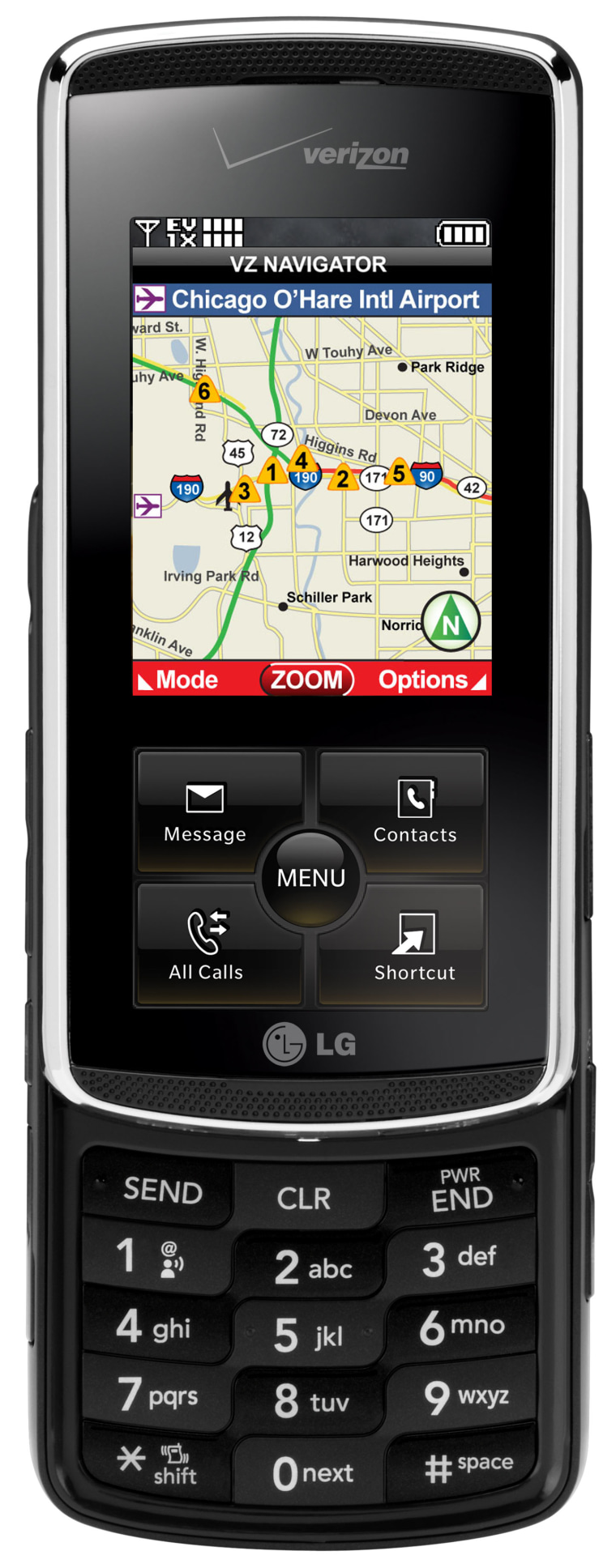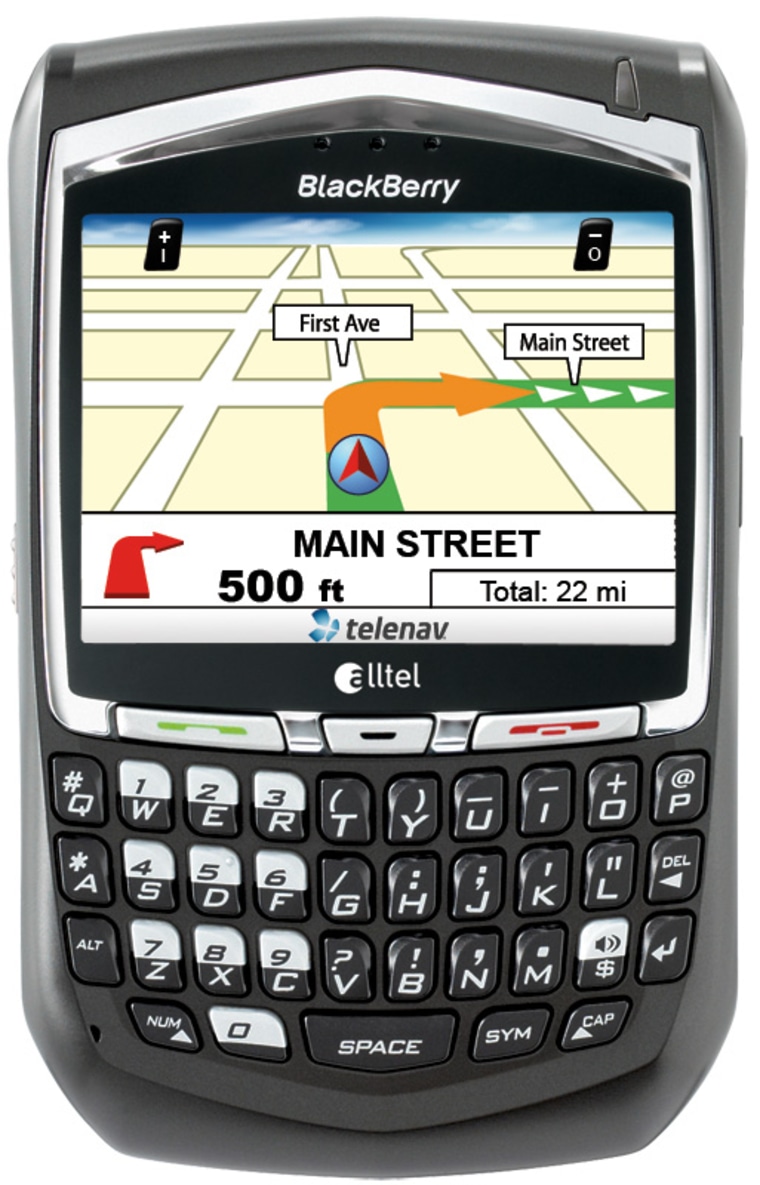Avi Greengart has what may be the funniest — and truest — explanation of why GPS on cell phones is now probably the most desired feature on mobiles.
“It’s really the best of both worlds, because women can use it to ask for directions, and men can use it so that they don’t have to ask for directions,” says Greengart, Current Analysis’ research director for mobile devices.
Aside from GPS, cell phone users looking to upgrade to new phones are more interested in mobile Internet and e-mail service, spurred to some degree by a wave of $99-a-month plans by carriers that includes unlimited Web and data use, as well as by the popularity of Apple’s iPhone, regarded by many as a premier device for mobile Web browsing.
A new iPhone model, expected to be announced June 9, may or may not have a GPS chip in it. The company routinely declines to comment on products in development. The current iPhone does have location-mapping software, which lets users approximate where there are, using cell phone towers and local Wi-Fi networks.
“The best way to look at where everything is going with cell phones is to look at your desktop or laptop computer,” said Joseph Farren, assistant vice president of public affairs for CTIA-The Wireless Association, an industry trade group.
“What you’re used to turning off at night on your desk you now simply slip into your shirt pocket. Whether it’s music, mapping and GPS, Web browsing — all that is now available on your mobile device.”
Farren said there are more than 600 models of cell phones on the U.S. market from which to choose.
“The last phase of the industry was about physical product design,” said Greengart. “Consumers were looking for phones that were thin or made of metal, or thin and made of metal. This round of phones is defined more by software, what the phone can do.”
David Chamberlain, principal analyst covering wireless for In-Stat, said more consumers are becoming interested in phones “capable of doing more computer-y things. They want to synchronize with their corporate e-mail account, they want to be able to view their word processing documents and maybe even modify them before they send them off somewhere else.”
GPS, he said, “probably has the strongest interest, aside from battery life.” Battery life? Yup.
“It’s one of the things that in some ways, people say might prevent them from getting other features. They say, ‘Yeah, I might want the video capability, but I’m worried that it’s going to chew up my battery.’ ”
GPS cross-pollination
In-Stat surveyed 1,700 wireless users, asking what features they’d be interested in -- and willing to pay for — in their next cell phones. GPS was the choice of 52 percent, and Internet service for 36 percent, Chamberlain said. The poll was done in late 2007, before this spring’s round of $99-a-month unlimited data plans from many cellular carriers.

GPS’ popularity for cell phones is not surprising, considering how common the personal navigation devices are becoming for vehicles. Stand-alone units, or those built-in to vehicles, come with display screens of between 3 and 4.3 inches.
“What we’ve found is that this is kind of a gateway product,” said Chamberlain. “Once you’ve had it on your mobile phone, you’re more interested in getting it in another form, such as for the car, or as a (stand-alone) portable device,” and vice-versa.
Nokia, which makes some of its phones with GPS chips, recently said up to 50 percent of its mobiles will have GPS chips by between 2010 and 2012.
The chip alone does not provide the maps and directions consumers seek, but it does in conjunction with a GPS service, which costs around $10 a month, from companies such as TeleNav, or from cell phone carriers, such as Verizon Wireless with its VZ Navigator Service.
Sprint’s GPS Navigation service costs the same, but is included if a customer signs up for the company’s $99/month “Simply Everything” plan.
“GPS is probably the biggest moneymaker right now for Verizon and Sprint,” said Chamberlain. “That single application makes more money for them than any others (such as mobile TV or video) because it has a real utility. It’s not just entertainment.”
Music and Net appeal
While mobile video and TV are still relatively fledgling features, phones with music capabilities are doing well, said Greengart.
“The iPhone is a perfect example of that, synching up with iTunes, which makes it very, very easy,” he said. “There are other examples, too: Sony Ericsson’s Walkman phones at AT&T, Nokia’s Xpress Music phones at T-Mobile, and Samsung and LG both have music phones at Sprint and Verizon Wireless.
As storage capacity increases on phones, that makes it easier to add music to them. “Two years ago, if you wanted to put music on a phone, you could put a few songs on; now you can put thousands on,” he said.
Mobile Web and e-mail definitely have sparked users’ interest. ComScore research firm surveyed more than 2,000 U.S. wireless customers earlier this year, and found that among mobile Internet users, there was a “huge increase in Web-browsing,” said Serge Matta, comScore senior vice president.
“Thirty-six percent say they access the Web on their cell phones more than once a day, up from 18 percent in 2006,” he said, when comScore’s last survey was done.
“Mobile Internet usage is at a tipping point,” comScore declared in its March report.
Some of that is due to the iPhone. “The funny thing is, if you talk to many iPhone users, some of them will tell you, ‘This is so exciting, it’s so freeing. I can do so many cool things because I have the Internet on my phone now,’ ” said Greengart.
“And you ask them what phone they had before, and more often than not, it’s a phone that had Internet, too, but they just didn’t know. Part of that is because Apple has done a very, very good job of making the iPhone Web-browsing experience a good one.”
Smartphone-like mobiles
There are more phones with on the market with “smartphone”-like capabilities that aren’t iPhones or BlackBerrys.
“Some consumers at the younger end of the scale, and even some adults, are now looking for QWERTY keyboards with their phones, where they didn’t consider one before,” said Greengart. “This is not the corporate e-mail crowd.
“The iPhone is still relatively expensive at $399. But even at the low end, we’re seeing a whole bunch of $99 smartphones, like Samsung’s BlackJack II at AT&T, and Palm’s Centro at AT&T and Sprint. With a contract, these phones cost $99. A consumer is looking at getting a regular phone, that might cost $49 or $79, and bumping it up to get something that manages their calendar, their contacts and gives them a Web browser. That’s a big step up” for what they get for their money, he said.
Unlimited data plans make it that much easier. How long they’ll hold is another question. For now, though, most major U.S. carriers “have some form of unlimited data plan,” Greengart said.
“That’s not necessarily the case in other countries. But in ours, you have all that you can download and eat. And once you have a clear idea of what it’s going to cost you,” versus being charged by the kilobyte, “that makes it much easier to swallow,” he said.
